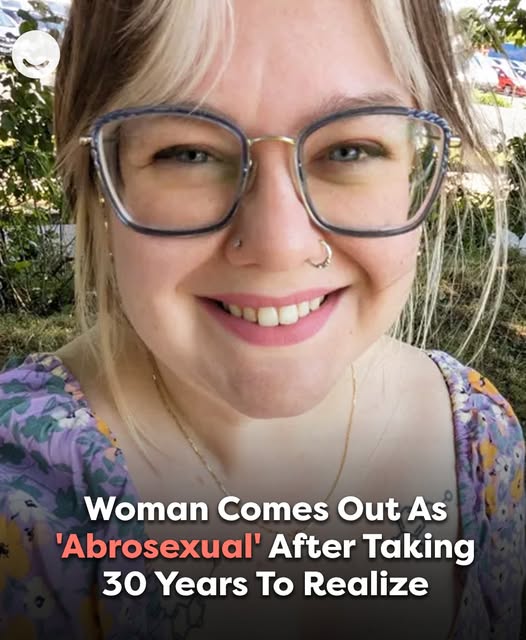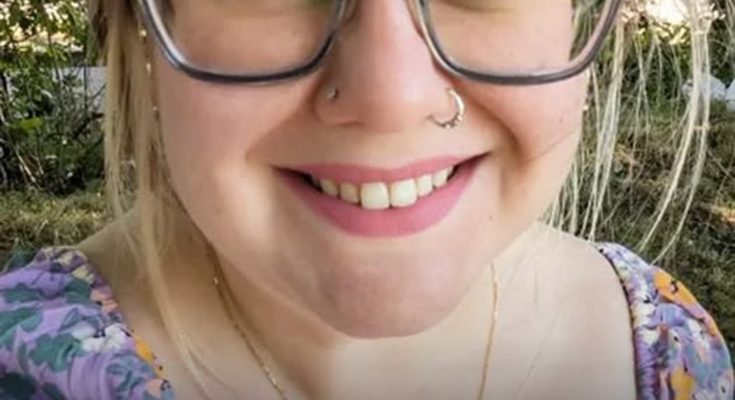
Woman Comes Out As Abrosexual After It Took Her 30 Years To Realize Her Sexuality
Journalist Emma Flint, who identifies as abrosexual, has opened up about her coming out story.
Coming to terms with one’s identity can be a complex journey, especially when society struggles to acknowledge or understand it.
For one woman, it took three decades of self-reflection and discovery to identify as abrosexual – a term that describes a sexual orientation characterized by fluctuation and change.

“When I tell people I’m abrosexual, I’m often met with confusion,” Emma Flint shared with Metro.
“Questions like, ‘Is this even a real label?’ or ‘Why can’t you just pick one?’ are unfortunately common.”
Her journey began in the 1990s when awareness about LGBTQ+ identities was far less expansive than it is today.

Back then, sexual orientations were often boxed into rigid categories like straight, gay, or lesbian.

Anything outside of those labels was dismissed as either confusion or rebellion. “I grew up feeling lost,” she admitted.
“It wasn’t that I didn’t know myself; it was that my identity kept shifting in ways I didn’t know how to explain.”

The turning point came in 2020 when she stumbled upon an Instagram post by Zoe Stoller, a social media educator dedicated to raising awareness about lesser-known LGBTQ+ identities.
“It was like a light bulb went off,” she recalled. “Finally, there was a term – abrosexual – that perfectly described what I had been experiencing all along.”
For her, abrosexuality provided the clarity and validation she had long sought. It explained why her attraction sometimes aligned with being a lesbian, only to shift toward bisexuality weeks later.
“It wasn’t indecisiveness or confusion,” she emphasized. “It was simply how my identity naturally evolves.”
Coming out as abrosexual, or sexually fluid, however, hasn’t been without challenges. When she confided in a close friend about her newfound identity, the response was dismissive.
“I read and reread their text, hoping I had misinterpreted the tone,” she said. “But it was clear – my identity wasn’t being taken seriously.”

This reaction hurt deeply, though it wasn’t entirely unexpected.
“Sadly, they weren’t the first person to question my authenticity, and I doubt they’ll be the last.”
Despite these setbacks, she found support in other areas of her life. Friends and family members who were initially unfamiliar with abrosexuality made an effort to educate themselves. “

They listened with respect and tried to understand, which made all the difference,” she said.
One persistent misconception is that being abrosexual complicates romantic relationships.
Flint refutes this notion, explaining that her sexual fluidity doesn’t affect her ability to love and commit.
“I’m attracted to the person, not their gender,” she explained. “My identity might fluctuate, but it doesn’t change my feelings for my partner.”
Unfortunately, not everyone approaches the topic with the same openness.
“I’ve heard it all,” she said. “‘Just say you’re bisexual and move on,’ or ‘You’re just confused.’ But I refuse to let ignorance dictate how I define myself.”


Her hope is that greater awareness will normalize abrosexuality as just another facet of human diversity.
“It’s not about being trendy or different,” she said. “It’s about understanding that identities like mine are valid, even if they’re unfamiliar to you.”
She believes education is key to fostering acceptance.

“There’s a wealth of LGBTQ+ resources available online,” she pointed out. “It’s time people stepped out of their comfort zones and made an effort to learn.”
Reflecting on her journey, she expressed gratitude for finally finding a term that encapsulates her identity.
“Before this, I felt like a fraud, like there was something wrong with me,” she said. “Now, I understand that my fluidity is just part of who I am—and that’s something to celebrate.”

After 30 years of searching, she’s no longer constrained by others’ expectations or misunderstandings.
“I’m excited to embrace this fluidity and see where it takes me,” she concluded. “What matters most is that it makes sense to me—and that’s enough.”
You can read Emma Flint’s full article here.



